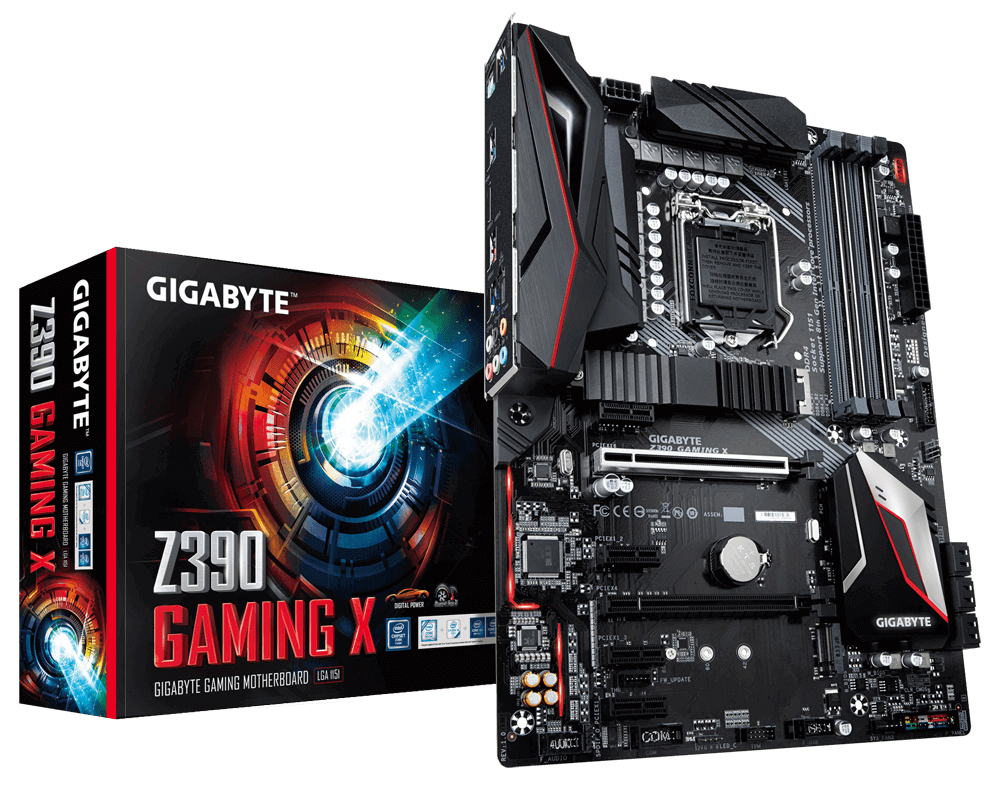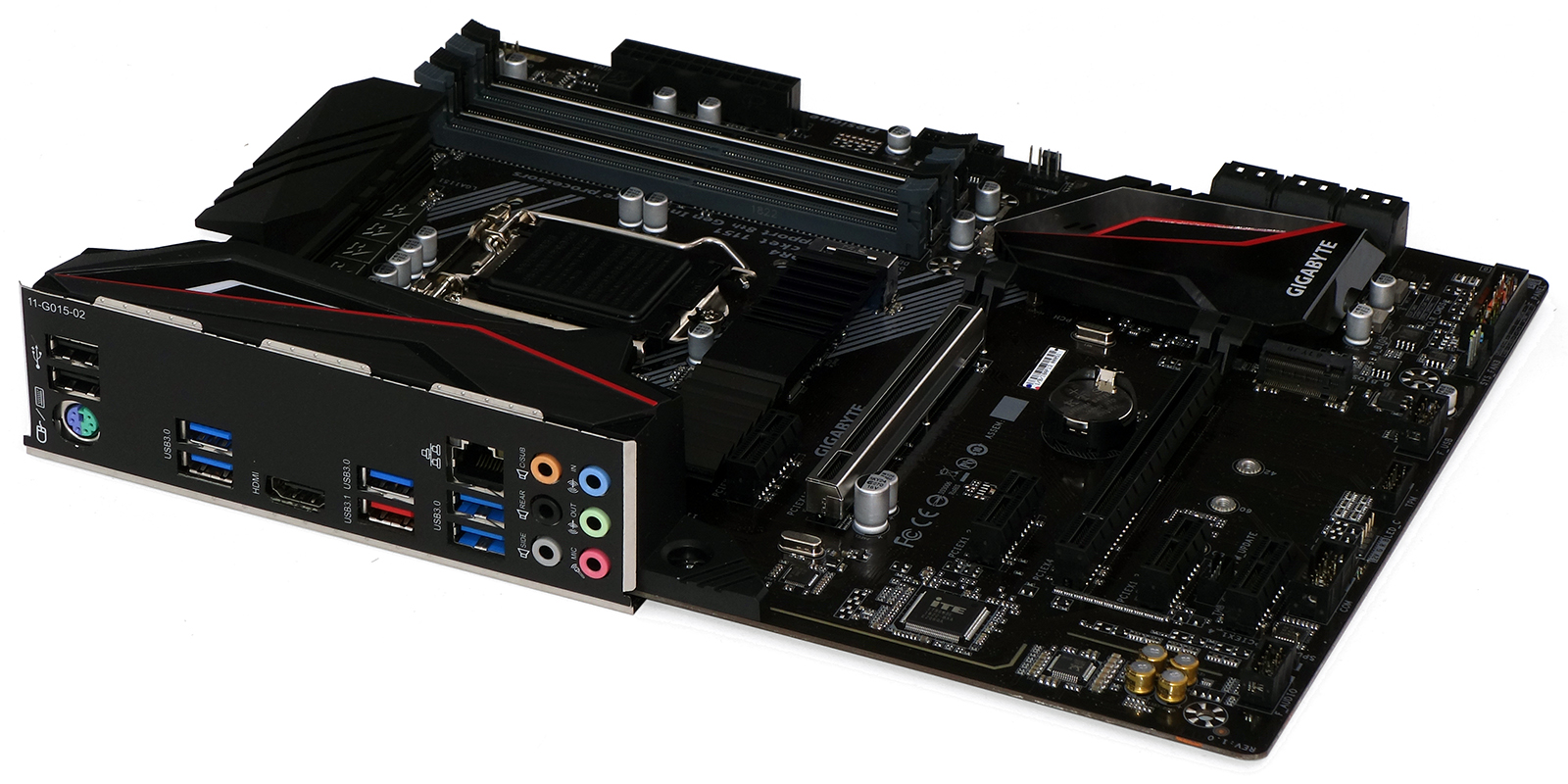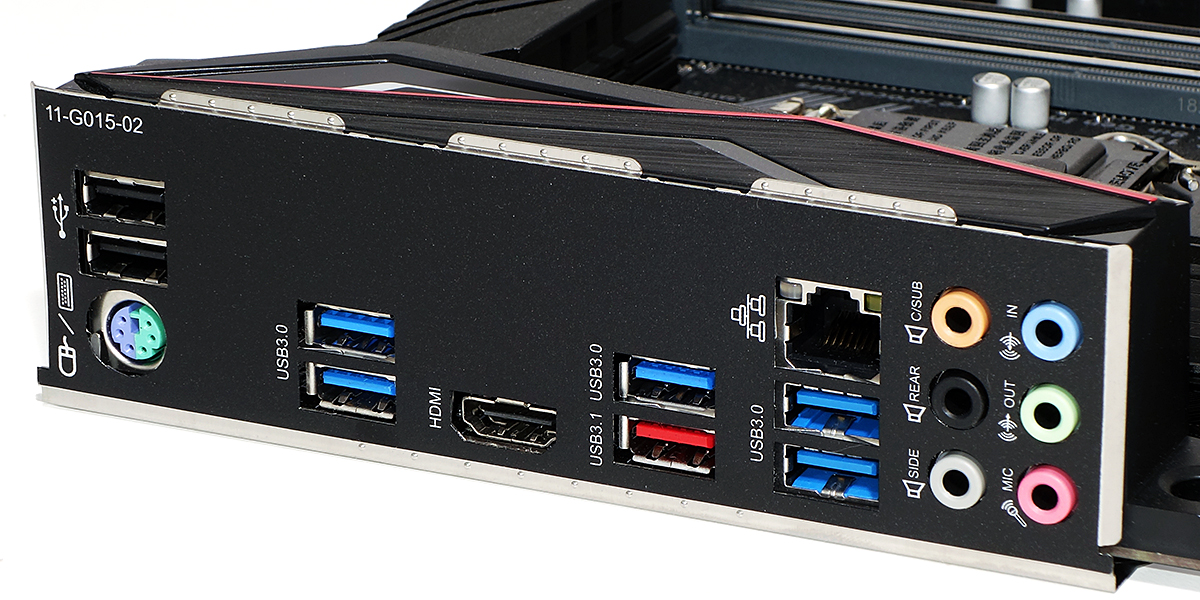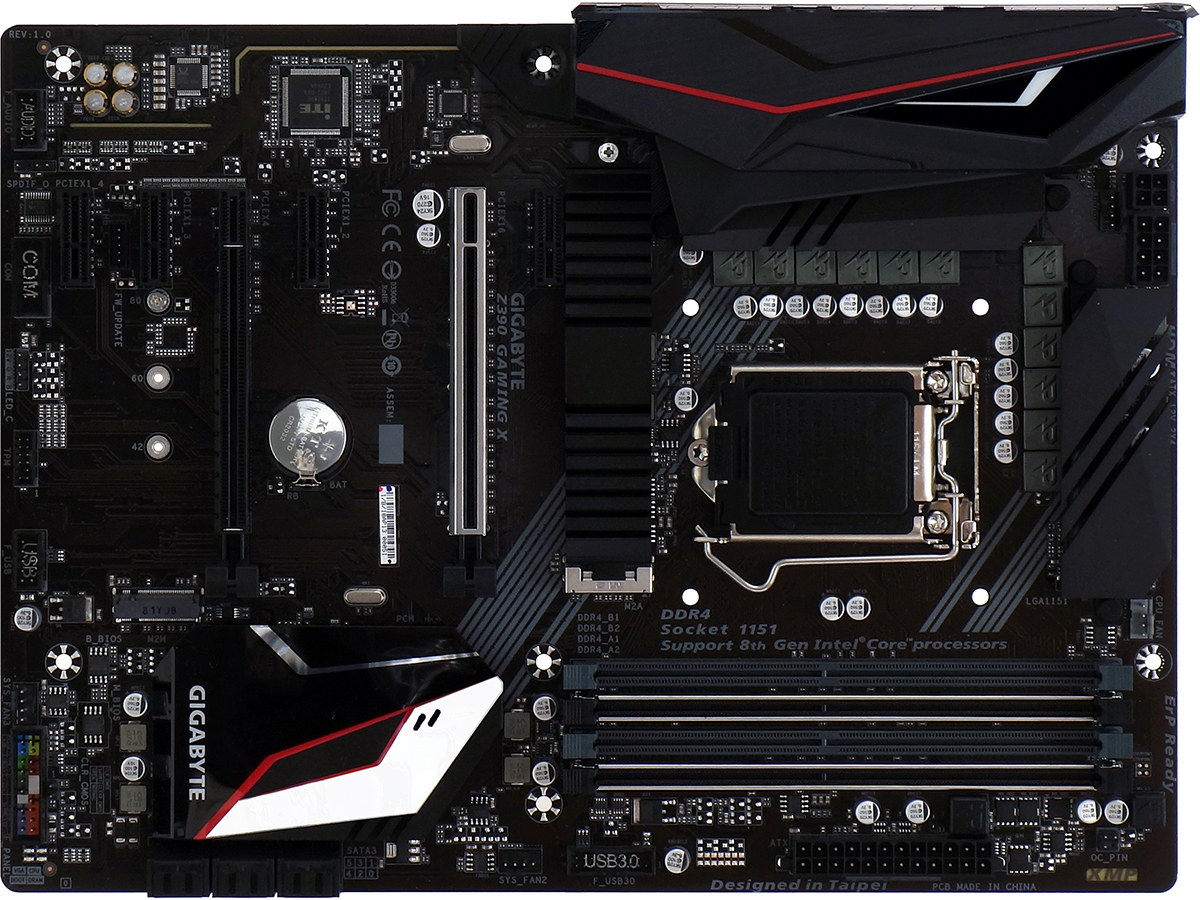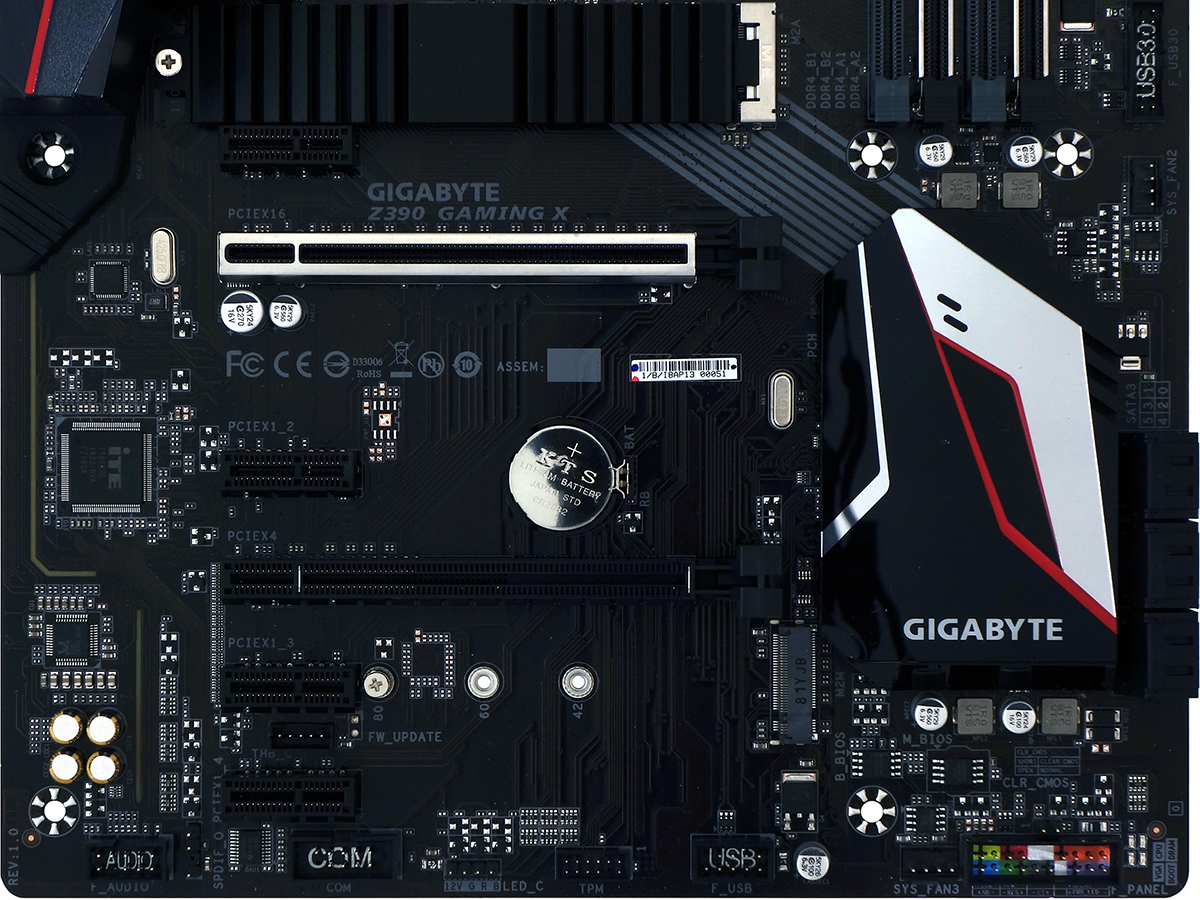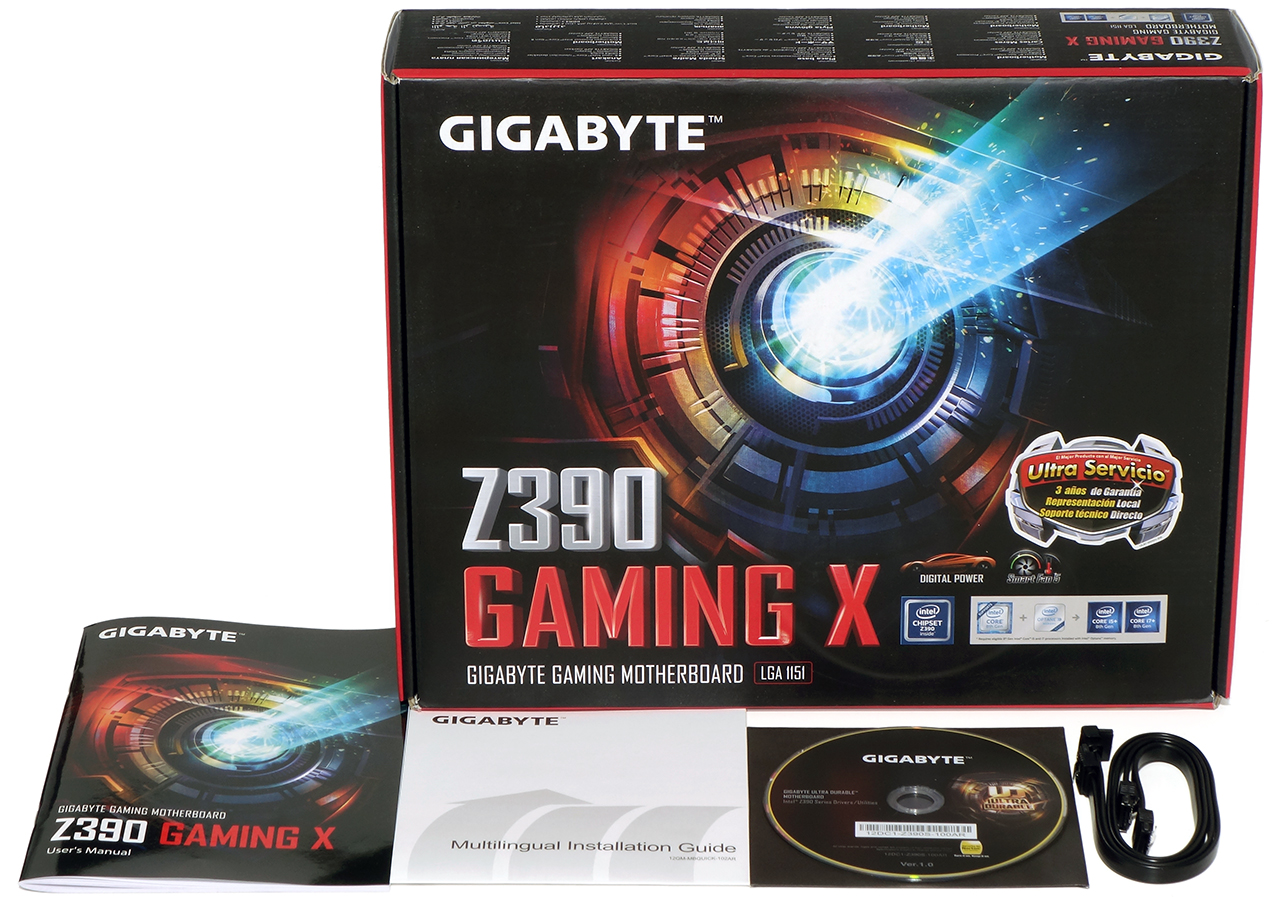Tom's Hardware Verdict
The Z390 Gaming X is the cheapest way we know of overclock a Core i9-9900K, even if it needs extra cooling to do so. Users with lower-model processors will have even better results.
Pros
- +
Consistently under $150
- +
Fully supports Core i9-9900K
- +
Good overclocking
Cons
- -
Second PCIe x16 slot has only four PCH lanes
- -
No front-panel USB3 Gen2
- -
Only one USB3 Gen2 header (on the I/O panel)
- -
Hot voltage regulator requires a fan near CPU socket
Why you can trust Tom's Hardware
Features and Layout
Z390 is a requirement for overclocking Intel’s latest processors, yet lower-cost models often abuse that credential by throttling back under the hefty power load of Intel’s high-end Core i9-9900K. Of course, there are buyers who would choose a lesser processor to better match those low-cost boards, which is why we recently retested a few under the lighter load of a Core i5. Among those recent Intel boards we tested, Gigabyte’s Z390 SLI stood out as the one inexpensive option that fully supported both high-end and mid-range processors. The Z390 Gaming X ($150 / £154) offers a similar design to the pricier model, for those who don’t need (or want to pay for) SLI.
Gigabyte Z390 Gaming X Specs
| Socket | LGA 1151 |
| Chipset | Intel Z390 |
| Form Factor | ATX |
| Voltage Regulator | 12 Phases |
| Video Ports | HDMI 1.4 |
| USB Ports | 10Gbps: (1) Type A5Gb/s: (5) Type A, (2) USB 2.0 |
| Network Jacks | (1) Gigabit Ethernet |
| Audio Jacks | (6) Analog |
| Legacy Ports/Jacks | (1) PS/2 |
| Other Ports/Jack | ✗ |
| PCIe x16 | (2) v3.0 ( x16/x4) |
| PCIe x8 | ✗ |
| PCIe x4 | ✗ |
| PCIe x1 | (4) v3.0 |
| CrossFire/SLI | 3x / 2x |
| DIMM slots | (4) DDR4 |
| M.2 slots | (2) PCIe 3.0 x4 / SATA(SATA M2-1 excl pt 1, any M2-2 pts 4-5) |
| U.2 Ports | ✗ |
| SATA Ports | (6) 6Gb/s (SATA 1, 4/5 shared) |
| USB Headers | (1) v3.0, (1) v2.0 |
| Fan Headers | (4) 4-Pin |
| Legacy Interfaces | Serial COM Port, System (beep-code) Speaker |
| Other Interfaces | FP-Audio, RGB-LED, TPM, Thunderbolt AIC |
| Diagnostics Panel | ✗ |
| Internal Button/Switch | ✗ / ✗ |
| SATA Controllers | Integrated (0/1/5/10) |
| Ethernet Controllers | WGI219V PHY |
| Wi-Fi / Bluetooth | ✗ |
| USB Controllers | ✗ |
| HD Audio Codec | ALC892 |
| DDL/DTS Connect | ✗ / ✗ |
| Warranty | 3 Years |
So similar is the Z390 Gaming X layout to the previously-tested Gaming SLI that we had to do a double-take, at first glance finding nothing more than the center slot missing the pricier-board’s metal cover and the lower slot switched from x16-length to x1. The fact that the middle slot has only four fixed lanes rather than stealing eight from the upper x16 slot could be seen as a benefit to anyone hoping to use a PCIe x4 storage card there, since it leaves the top slot’s sixteen lanes intact. As for the bottom slot, the change from x16-length to x1 is hardly a problem given that the Gaming SLI’s bottom slot had only two lanes.
A closer look at the I/O panel reveals that the legacy PS/2 port and two USB ports have traded position compared to the Z390 Gaming SLI, and that those two ports have magically transformed from USB 3.0 (aka 3.1 Gen1) to USB 2.0. One of the Gaming SLI’s Gen2 ports is also knocked down to Gen1, leaving only one 10Gb/s connection. We’re keen on the retention of two USB 2.0 ports to connect our keyboard and mouse without eating into the chipset’s HSIO resources, but limiting next-generation USB to just a single port is a bit too limiting for our comfort.
In fact, a quick look up the page to the features table shows that the only resource issues that really mattered with the Gaming SLI are still present with the Z390 Gaming X: The lower M.2 interface still disables two SATA ports regardless of whether an NVMe or SATA drive is installed there, and the upper M.2 slot steals a SATA port whenever it’s filled with an M.2 drive that uses the SATA interface.
The Z390 Gaming X still features the same 10+2 phase voltage regulator as its SLI sibling, which remains fed by both ATX12V (4-pin) and EPS12V (8-pin) headers: The extra 4-pin connector allows users to exceed the 42A current limit of eight pins (four power, four ground) when overclocking.
Other than changes to its x16-length slots, the Z390 Gaming X retains the same lower section as the Gaming SLI. That means the bottom edge includes front-panel audio, S/PDIF breakout cable, legacy serial (COM) port, RGB, TPM, USB 2.0, one (of four) 4-pin fan, Intel-style front-panel LED/button, and PC Speaker headers along the bottom edge. One key difference is that RGB is not extended to the I/O panel’s decorative internal cover, though an unmasked stripe that follows the audio-to-I/O panel pathway is still lit in red.
The codec itself is also downgraded from the SLI version’s Realtek ALC1220 to its older ALC892.
Get Tom's Hardware's best news and in-depth reviews, straight to your inbox.
Gigabyte’s Z390 Gaming X includes a manual, software installation guide, driver and application disc, two SATA cables and M.2 drive screws. Any other connection needs must be filled with the buyer’s own parts, though many of the board’s headers are already addressed by case cables.
MORE: Best Motherboards
MORE: How To Choose A Motherboard
MORE: All Motherboard Content
-
LordVile Don't really see the "budget" aspect of a board that you have to pay 400 for a CPU for anyway. Because if you're not running a 9900K what do you need Z390 for?Reply -
icouldcareless why review a year old Gigabyte Z390 Gaming X when the Gigabyte X570 Gaming X just came out? according to newegg the gaming x is the 2nd best seller for X570 but you wont find any reviews for it.Reply -
Crashman Reply
9600K. Testing with the heavy power load of the 9900K is just overkill enough to assure you that you can do anything you wish with the 9600k. And what else would you use with any current, unlocked Intel 1151 processor?LordVile said:Don't really see the "budget" aspect of a board that you have to pay 400 for a CPU for anyway. Because if you're not running a 9900K what do you need Z390 for?
Not a year old in review options, it wasn't available to us until November. We procured this in May as an alternative to the Gaming SLI, which was cut from US distribution shortly after being awarded. It was supposed to have been a June review but X570 coverage started before I got around to writing this review's conclusion.icouldcareless said:why review a year old Gigabyte Z390 Gaming X when the Gigabyte X570 Gaming X just came out? according to newegg the gaming x is the 2nd best seller for X570 but you wont find any reviews for it. -
LordVile Reply
Or you could just get a Z370 board? Also why would ANYONE buy the 9600k? It's a 6c Chip with no HT. You can get a 6c/12t R5 for just over half the price with a b450 board that goes for under 100. Or you could get a 3600 with for less than the 9600K with a board for the same price for the set and have features like PCIE 4. Literally the only reason to buy an intel platform now is the Adobe suite to use the iGPU for rendering and 240Hz gaming because in everything else AMD has either caught or exceeded intel at a lower price.Crashman said:9600K. Testing with the heavy power load of the 9900K is just overkill enough to assure you that you can do anything you wish with the 9600k. And what else would you use with any current, unlocked Intel 1151 processor?
Not a year old in review options, it wasn't available to us until November. We procured this in May as an alternative to the Gaming SLI, which was cut from US distribution shortly after being awarded. It was supposed to have been a June review but X570 coverage started before I got around to writing this review's conclusion. -
Crashman Reply
What's still available for Z370? The Z390 is basically Z370 with integrated USB3 Gen2. And I don't know why anyone would bring AMD processors into a Z390 motherboard discussion.LordVile said:Or you could just get a Z370 board? Also why would ANYONE buy the 9600k? It's a 6c Chip with no HT. You can get a 6c/12t R5 for just over half the price with a b450 board that goes for under 100. Or you could get a 3600 with for less than the 9600K with a board for the same price for the set and have features like PCIE 4. Literally the only reason to buy an intel platform now is the Adobe suite to use the iGPU for rendering and 240Hz gaming because in everything else AMD has either caught or exceeded intel at a lower price. -
LordVile Reply
Z370 boards are also cheaper and not advised for the higher end chips like the 9900K.Crashman said:What's still available for Z370? The Z390 is basically Z370 with integrated USB3 Gen2. And I don't know why anyone would bring AMD processors into a Z390 motherboard discussion.
Because the only thing you can put into a Z390 board is a 8th or 9th gen intel CPU. For the board reviewed, it's decent. It's not great, you could get a lot more for not much more investment. AMD is brought up because very few people should actually buy intel chips at the current time. For most tasks the much cheaper R5 2600 and a B450 board would do fine and for not much more you can get an X570 board and a ryzen 3000 series chip which for a start the 3700x is over £100 cheaper than the 9900K, the R9 3900X which demolishes the 9900K in productivity is the same price once you factor in the cooler you have to buy for the 9900K and all down the stack AMD is the cheaper and better option. The 3600 6c/12t for 200 vs the 6 core 6 threaded 9600K at 220 again without a cooler. The 9700k is 365 for 8 cores where the 3700x has 8 with SMT for 320 but includes a cooler. Intel chips are too expensive for what they are, they offer no HT against AMD chip that do, AMD has caught up on IPC even though speed is still capped about 0.5Ghz slower, they are more energy efficent and have implemented new tech like PCIE 4 that Z390 boards don't have.
Doesn't matter how "good" the board is if the platforms position is untenable to everyone who doesn't need quick rendering times on adobe premiere. -
cryoburner Reply
It's clearly relevant to look at all available products, not just one particular ecosystem, especially when "budget" is brought up. It's a bit of a stretch to consider a 9600K, Z390 motherboard and a capable cooler as a good "budget" offering.Crashman said:And I don't know why anyone would bring AMD processors into a Z390 motherboard discussion.
Some may be primarily interested in lightly-threaded performance for the specific software they run. But while a 6-core, 6-thread 9600K might currently run the vast majority of games and applications rather well, it's probably not going to hold up as well over time. And if that leaked roadmap for Intel's 10th-gen processors is to be believed, and they enable hyperthreading across their lineup to match AMD on thread count for their next CPUs, the 9600K may only be i3-level performance by around the end of the year, and the new i5s may perform more like the current i7s. The pricing just doesn't make much sense now. Once you figure in the cost of a capable cooler, it's priced within reach of an 8-core, 16-thread Ryzen 3700X, which in terms of multithreaded performance is most comparable to an i9-9900K, let alone the much lower-priced 6-core, 12-thread 3600.LordVile said:Also why would ANYONE buy the 9600k?
As far as gaming performance is concerned, with most common graphics card / resolution pairings, the slightly better per-thread performance of a 9600K is arguably not worth giving up SMT for, especially when you are paying a premium for it. For most gaming systems, the added cost of a 9600K over a 3600 would likely be better put toward graphics hardware. -
LordVile Replycryoburner said:It's clearly relevant to look at all available products, not just one particular ecosystem, especially when "budget" is brought up. It's a bit of a stretch to consider a 9600K, Z390 motherboard and a capable cooler as a good "budget" offering.
Some may be primarily interested in lightly-threaded performance for the specific software they run. But while a 6-core, 6-thread 9600K might currently run the vast majority of games and applications rather well, it's probably not going to hold up as well over time. And if that leaked roadmap for Intel's 10th-gen processors is to be believed, and they enable hyperthreading across their lineup to match AMD on thread count for their next CPUs, the 9600K may only be i3-level performance by around the end of the year, and the new i5s may perform more like the current i7s. The pricing just doesn't make much sense now. Once you figure in the cost of a capable cooler, it's priced within reach of an 8-core, 16-thread Ryzen 3700X, which in terms of multithreaded performance is most comparable to an i9-9900K, let alone the much lower-priced 6-core, 12-thread 3600.
As far as gaming performance is concerned, with most common graphics card / resolution pairings, the slightly better per-thread performance of a 9600K is arguably not worth giving up SMT for, especially when you are paying a premium for it. For most gaming systems, the added cost of a 9600K over a 3600 would likely be better put toward graphics hardware.
Wouldn't really believe Intels roadmaps at this point anyway. 10nm was supposed to be due at 8th gen which was what 2018? Doubt they put HT on the i5's though cos then they'd need HT on the i7 which means they'd have to bump the core count on the i9 and then they'd have thermal issues when trying to hit 5Ghz which is their only selling point right now. Unless they get 10nm out I don't see what intel could do to compete with AMD other than dropping prices which they seem reluctant to do. They have inferior products throughout the stack for higher prices (for the majority of applications) and people seem to just be buying them cos of intel inside or just pure fanboyism/lack of common sense because the 9900K might net you however much more FPS over a 3700X with a 2080Ti but the vast majority of people do not have a grands worth of GPU and with a say 2070 you might be within margin of for the 2080Tin is 200FPS over 180 FPS really worth the extra 100+ in cost? I mean that's another TB of SSD storage there, a good mech keyboard or headphones -
Crashman Reply
Sorry, that's a generalization that has nothing to do with this topic.cryoburner said:It's clearly relevant to look at all available products, not just one particular ecosystem, especially when "budget" is brought up. It's a bit of a stretch to consider a 9600K, Z390 motherboard and a capable cooler as a good "budget" offering -
CletusAwreetus First timer here. Just need a little clarification.Reply
"the Z390 Gaming X really needs a fan to be very close to its CPU socket just to keep the voltage regulator from throttling back the CPU under heavy loads."
Don't exactly know what this means for my build.
I plan on using my PC solely for Audio production. I will likely NOT be overclocking the cpu.
My setup will consist of an:
i5-9600k (using integrated graphics rather than dedicated GPU)
Hyper Evo 212 cpu cooler
Meshify C case with the stock front and rear 120mm fans + an additional 120mm fan in front.
Would this setup provide enough air flow to prevent cpu throttling?
As a side note:
I will be using a WD Blue 500gb NVMe ssd boot drive.
Should I install this in the top M.2 connector, with the heat spreader, or the bottom location?
Also I have already purchased a Seasonic Focus Gold 550w PSU, which does not have the extra
4-pin, 12v connector for the cpu. I believe I won't need the extra power if I am not running a GPU card or overclocking the cpu. Am I right in making this assumption? Or, do I need a PSU with the
8 pin and 4 pin power connectors to power the cpu?
Any advice would be greatly appreciated. I don't really know what I'm doing.
